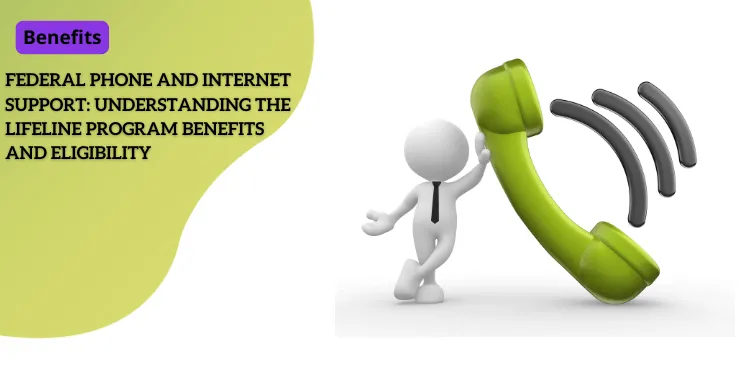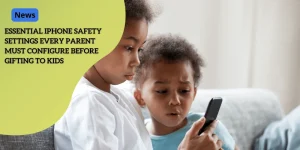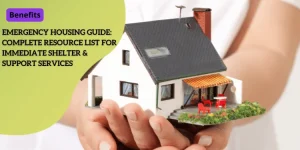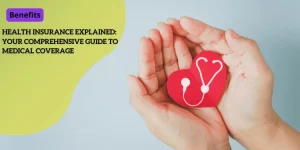Federal Phone and Internet Support: Understanding the Lifeline Program Benefits and Eligibility

Anúncios
The Lifeline Program is a federal initiative designed to make phone and internet services more affordable for low-income individuals and households.
Recognizing the essential role that communication services play in everyday life, this program aims to bridge the digital divide and ensure that everyone has access to vital phone and internet services.
Anúncios
Making Communication Affordable
The Lifeline Program provides significant discounts on landline, cell phone, or internet services.
These discounts can dramatically reduce the cost of maintaining a connection, making it much more manageable for those with limited income.
Anúncios
Whether it’s staying in touch with family, accessing emergency services, or applying for a job, the benefits of having reliable phone and internet service are immense and far-reaching.
However, it’s important to note that households can only receive one Lifeline discount at a time — either for phone service (landline or wireless) or internet, not both.
Target Audience
This valuable program is specifically targeted towards low-income individuals and households.
Those who struggle to meet their basic needs may find it especially challenging to afford phone and internet services.
By providing these critical services at a reduced cost, the Lifeline Program helps ensure that everyone, regardless of income, has the opportunity to stay connected to the world around them.
The process of assessing eligibility, application, and choosing service options is systematic and accessible, meant to simplify participation for all eligible individuals.
By understanding the basics of what the Lifeline Program offers and who it’s for, you’re already on your way to making informed decisions about your communication needs.
Eligibility Requirements
Based on Household Income and Size
To qualify for the Lifeline program, your eligibility is primarily determined by your household income and size.
Specifically, your household income must be at or below 135% of the federal poverty guidelines.
The guidelines are updated annually to reflect changes in the cost of living. It’s essential to check the current federal poverty guidelines to accurately determine your eligibility.
Household size plays a significant role here. The more members in your household, the higher your income threshold is allowed to be.
For instance, a single individual might have a different income limit compared to a household of four.
This structure ensures that larger families, who generally have greater overall expenses, are more fairly evaluated.
Participation in Federal Assistance Programs
Another pathway to qualify for Lifeline is through participation in specific federal assistance programs.
If you or any member of your household receives benefits from programs like Medicaid, Supplemental Nutrition Assistance Program (SNAP), Supplemental Security Income (SSI), Federal Public Housing Assistance (FPHA), or Veterans Pension and Survivors Benefit, you are automatically eligible for Lifeline.
Participation in these programs demonstrates that your household meets the income criteria, thus simplifying the qualification process.
Documentation Requirements
To confirm eligibility, you need to provide proof through appropriate documentation.
Here’s a quick list of what you may need:
- Age Verification: A government-issued ID, such as a driver’s license or birth certificate.
- Income Verification: Recent pay stubs, a tax return, or an official letter from your employer detailing your income.
- Address Verification: Utility bills, mortgage statements, or a lease agreement showing your current address.
Submitting accurate documentation is crucial to avoid delays or denial of your application. Ensure all documents are up-to-date and clearly legible.
Understanding these eligibility requirements and gathering the necessary documents prepares you to successfully apply for the Lifeline program.
A smooth application process relies on thorough preparation and accurate documentation.
If you meet the eligibility criteria, you’ll be on your way to receiving valuable support through discounted phone and internet services.
Application Process
The application process for the Lifeline Program is straightforward, ensuring that eligible low-income individuals and households can easily access the necessary discounts on phone and internet services.
Multiple Application Methods
The Lifeline Program offers flexible ways to submit applications:
- Online: Applicants can apply through the Lifeline National Verifier website. This method is typically the fastest and can guide you through each step.
- Mail: Download the application form from the Lifeline website, fill it out, and mail it along with the required documentation.
- Through Service Providers: Many phone and internet service providers offer assistance with Lifeline applications. You can visit their store or contact their customer service for help.
Required Documentation for Eligibility Verification
When applying for the Lifeline Program, you must provide documentation to verify your eligibility.
These documents help prove your income level or participation in a qualifying federal assistance program.
Here’s what you might need:
- Income Verification: Recent pay stubs, a letter from your employer, or income statements from social services.
- Federal Assistance Program Documentation: Benefit award letters, approval letters, or verification letters that show participation in programs like Medicaid or SNAP.
- Proof of Identity and Residency: A valid government-issued ID, utility bills, or a lease agreement.
Step-by-Step Application Submission Process
- Gather Required Documentation: Before starting your application, ensure you have all the necessary documents to prove your eligibility.
- Choose an Application Method: Decide whether you will apply online, by mail, or through a service provider.
- Complete the Application Form:
- Online: Create an account on the Lifeline National Verifier website. Fill in the required information and upload your documents.
- Mail: Download the application form from the Lifeline website. Fill it out completely and clearly. Include your documentation and mail it to the specified address.
- Service Provider: Visit your chosen provider’s store or contact their customer service. They will help you fill out and submit the application.
- Submit Your Application: After ensuring all information is accurate and all required documents are included, submit your application based on the method you chose.
- Wait for Approval: Once submitted, your application will be reviewed. This can take a few days if done online or longer if submitted by mail. You will be notified of the outcome via email, mail, or through your service provider.
Successfully navigating the application process is key to obtaining the valuable benefits the Lifeline Program offers. Now that you are empowered with this knowledge, seeking assistance if any issues arise is the logical next step.
Service Options and Benefits
When it comes to choosing the right service for your needs, the Lifeline Program offers flexibility.
Not every household has the same communication needs, and this federal initiative appreciates that diversity.
Whether you prefer a landline, cell phone (wireless), or an internet connection, you can find a plan that suits your household.
Choices and Discounts
Lifeline participants can enjoy significant discounts on:
- Landline Telephone Service – Ideal for those who prefer a traditional wired telephone connection.
- Wireless (Cell) Phone Service – Perfect for individuals who need the flexibility to stay connected on the go.
- Internet Service – A crucial option for households needing online connectivity for education, work, and daily life.
Available Service Plans and Coverage
Each service provider participating in the Lifeline Program offers different plans and coverage areas.
When selecting a plan, it’s important to review the options available through approved Lifeline providers. Some common features include:
- Unlimited Local Calls – Usually included in landline plans.
- Monthly Data Allowance – In wireless and internet plans, essential for internet use.
- Nationwide Coverage – Available with various mobile service providers ensuring you are connected wherever you are.
These plans are tailored to provide basic yet essential connectivity without the burden of a full-price service bill.
Discounted Rates and Features
The rates offered through the Lifeline Program can be significantly lower than standard service rates.
Subscribers might expect discounts of around $9.25 per month on their service bills, although this amount can vary based on the provider and state regulations.
Moreover, Tribal lands residents can receive additional support, potentially increasing the monthly discount up to $34.25.
Apart from discounted rates, participants often benefit from features such as:
- Bundled Services – Some providers offer phone and internet bundles.
- Emergency Services Access – Assured connectivity to emergency services.
- No Additional Fees – Many Lifeline plans come with minimal to no extra charges over the monthly rate.
Choosing a plan under the Lifeline Program means accessing essential services at a fraction of the cost, helping to keep you and your family connected.
With an understanding of the plans and benefits provided by the Lifeline Program, the next natural step is ensuring you know where to seek support or raise any issues related to your service.
Support and Issue Resolution
Understanding how to solve issues quickly can be crucial for a smooth experience with the Lifeline Program.
Whether dealing with service interruptions, billing problems, or difficulties with the application process, there are several resources at your disposal.
Contact Information for the Universal Service Administrative Company
The Universal Service Administrative Company (USAC) is responsible for managing the Lifeline Program.
If you encounter any issues directly related to the Lifeline Program, including application problems or eligibility questions, USAC should be your first point of contact.
You can reach out to USAC for assistance via:
- Phone: 1-800-234-9473
- Email: LifelineSupport@usac.org
- Website: USAC’s Lifeline Support
Monitoring and managing your application status or seeking help with general inquiries can also be easily done through the USAC’s Lifeline Support Center.
Procedure for Filing Service-Related Complaints
If your issues pertain to your phone or internet service itself, such as connectivity problems, poor service quality, or billing discrepancies, the best course of action is to contact your specific service provider directly.
They should have a dedicated customer service line to handle such complaints. Here’s a general procedure you can follow:
- Detail Your Issue: Clearly note down the specific problem you’re facing along with the date and time it occurred.
- Contact Your Service Provider: Use the customer service number often provided on your bill or the provider’s website.
- Follow Up: Keep a record of your conversations, including the names of the representatives you speak with, and follow up if necessary.
Should your service provider fail to resolve the issue satisfactorily, you can escalate the matter to your state’s Public Utility Commission or file a complaint with the Federal Communications Commission (FCC).
Guidance for Resolving Issues with Service Providers
Aside from direct complaints, there are several tips to address issues you might encounter with your Lifeline service provider:
- Check Your Plan: Ensure you are fully aware of your service plan’s details. Providers often have different packages and options that might better suit your needs.
- Ask for Escalation: If initial customer service interactions do not resolve your problem, ask to speak to a supervisor or a higher-level support team.
- Document Everything: Keep a detailed log of your communications and save any written correspondence such as emails or service tickets.
Effective communication and persistence can go a long way in resolving technical support or service-related issues.
The Lifeline Program is here to ensure you stay connected with essential communication services, and these tools can help you maintain that connection with minimal hassle.






